Invasive Plant Species
Invasive Plant in Kerala
Kerala’s rich biodiversity faces a significant threat from invasive plant species. These non-native plants flourish rapidly, often outcompeting native species and disrupting the delicate balance of the ecosystem. Invasion by alien plants affects the survival of local species, damages soil quality and affects groundwater availability. It also indirectly affects animals by intruding the food chain.
അധിനിവേശ സസ്യ ഇനങ്ങൾ പ്രാദേശിക ജീവിവർഗങ്ങളുടെ നിലനിൽപ്പിനെ ബാധിക്കുകയും മണ്ണിന്റെ ഗുണനിലവാരത്തെ നശിപ്പിക്കുകയും ഭൂഗർഭജല ലഭ്യതയെ ബാധിക്കുകയും ചെയ്യുന്നു. ഭക്ഷ്യ ശൃംഖലയിൽ നുഴഞ്ഞുകയറുന്നതിലൂടെ ഇത് മൃഗങ്ങളെയും പരോക്ഷമായി ബാധിക്കുന്നു.
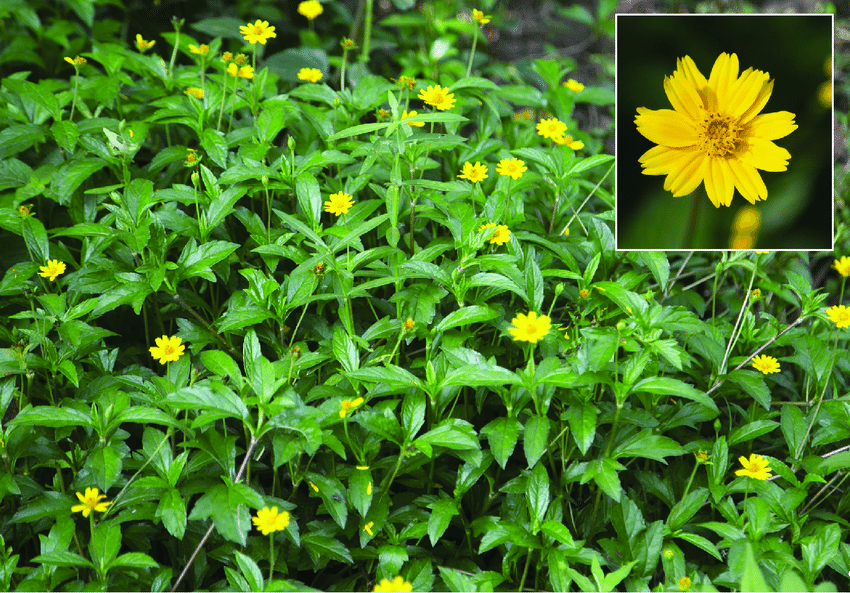
Sphagneticola trilobata (Singapore Daisy)
Scientific classification
Kingdom: Plantae
Clade: Tracheophytes
Clade: Angiosperms
Clade: Eudicots
Clade: Asterids
Order: Asterales
Family: Asteraceae
Genus: Sphagneticola
Species: S. trilobata
Binomial name
Sphagneticola trilobata
Sphagneticola trilobata (Singapore Daisy) is another plant which is also used as garden plant that produces beautiful yellow flowers. “It is widely seen in unattended areas, but once it is spread, no plants will sprout in the area,” This plant has established satellite populations and is invasive due to its fast growth and ability to displace natural vegetation.
Sphagneticola trilobata മനോഹരമായ മഞ്ഞ പൂക്കൾ ഉൽപ്പാദിപ്പിക്കുന്ന പൂന്തോട്ട സസ്യമായും ഉപയോഗിക്കുന്ന മറ്റൊരു ചെടിയാണ്. “ഇത് ശ്രദ്ധിക്കപ്പെടാത്ത സ്ഥലങ്ങളിൽ വ്യാപകമായി കാണപ്പെടുന്നു, പക്ഷേ ഒരിക്കൽ ഇത് വ്യാപിച്ചാൽ, പ്രദേശത്ത് ചെടികളൊന്നും മുളക്കില്ല”.
Summary: Forms dense mats, displacing native species, reducing soil moisture, and altering fire regimes.
Why invasive: Rapidly reproduces vegetatively and by seeds, tolerant of diverse soil conditions, forms dense mats that suppress other plants.
Description: A low-growing herb with small, yellow flowers and trilobed leaves. The stems are creeping and hairy, and the leaves are covered in fine hairs.

Acacia mearnsii (Black wattle):
Scientific classification
Kingdom: Plantae
Clade: Tracheophytes
Clade: Angiosperms
Clade: Eudicots
Clade: Rosids
Order: Fabales
Family: Fabaceae
Subfamily: Caesalpinioideae
Clade: Mimosoid clade
Genus: Acacia
Species: A. mearnsii
Binomial name
Acacia mearnsii
Acacia mearnsii (Black wattle) trees were used for commercial purposes. Now, shola forests of Kerala are covered with those trees. They badly affect the groundwater sources,” one of the scientists at KFRI said. Acacia in fact was not actually invasive and was brought for plantations. But since it was not economically viable, it was abandoned, but spread widely.
This high-risk species is invasive because it displaces and destroys a large number of native species, causing environmental and economic loss.
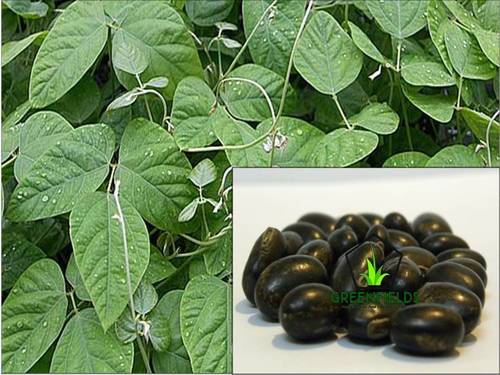
Mucuna bracteata:
Scientific classification
Kingdom: Plantae
Clade: Tracheophytes
Clade: Angiosperms
Clade: Eudicots
Clade: Rosids
Order: Fabales
Family: Fabaceae
Subfamily: Faboideae
Genus: Mucuna
Species: M. bracteata
Binomial name
Mucuna bracteata
Mucuna bracteata, a kind of leguminous plant used by farmers in rubber plantations to regulate nitrogen and control soil erosion, also spreads rapidly and prevents the growth of other plants and trees.
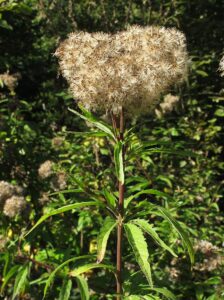
Eupatorium cannabinum:
Scientific classification
Kingdom: Plantae
Clade: Tracheophytes
Clade: Angiosperms
Clade: Eudicots
Clade: Asterids
Order: Asterales
Family: Asteraceae
Genus: Eupatorium
Species: E. cannabinum
Binomial name
Eupatorium cannabinum

Lantana camara (Konkini or Arippoo):
Scientific classification
Kingdom: Plantae
Clade: Tracheophytes
Clade: Angiosperms
Clade: Eudicots
Clade: Asterids
Order: Lamiales
Family: Verbenaceae
Genus: Lantana
Species: L. camara
Binomial name
Lantana camara
This plant has started naturalisation and is preferred by pollinating insects as it produces more pollen grains and nectar than the native ones, affecting the local biodiversity and its regeneration.
Summary: Forms dense thickets, displacing native vegetation, providing poor habitat for native animals, and releasing allelopathic chemicals that inhibit other plants.
Why invasive: Tolerant of diverse soil conditions, produces copious berries attracting birds that disperse seeds widely.
Description: An evergreen shrub with showy clusters of orange, pink, yellow, or purple flowers. The leaves are rough and serrated, and the stems are prickly.

Eichhornia crassipes (Water hyacinth):
Scientific classification
Kingdom: Plantae
Clade: Tracheophytes
Clade: Angiosperms
Clade: Monocots
Clade: Commelinids
Order: Commelinales
Family: Pontederiaceae
Genus: Pontederia
Species: P. crassipes
Binomial name
Pontederia crassipes
Water hyacinth (Eichhornia crassipes) the invasive species found in backwaters started appearing in paddy fields after floods.
One of the fastest-growing plants known, it reproduces primarily by way of runners or stolons, which eventually form daughter plants. It blocks waterways, limiting boat traffic, swimming and fishing. The weed prevents sunlight and oxygen from reaching the water column and submerged plants.
Summary: Forms dense mats on water bodies, blocking sunlight and oxygen, harming aquatic life and hindering navigation.
Why invasive: Fast-growing, reproduces vegetatively and by seeds, tolerant of water quality fluctuations.
Description: A free-floating aquatic plant with glossy green leaves and violet flowers. Its extensive root system anchors it in place, while the air-filled petioles keep the leaves buoyant.

Salvinia molesta (African Payal):
Scientific classification
Kingdom: Plantae
Clade: Tracheophytes
Division: Polypodiophyta
Class: Polypodiopsida
Order: Salviniales
Family: Salviniaceae
Genus: Salvinia
Species: S. molesta
Binomial name
Salvinia molesta
giant salvinia (Salvinia molesta), the invasive species found in backwaters started appearing in paddy fields after floods.
A floating aquatic fern that thrives in slow-moving, nutrient-rich, warm, freshwater. It forms dense vegetation mats that reduce water-flow and lower the light and oxygen levels in the water.
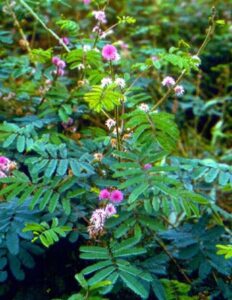
Mimosa diplotricha var. diplotricha (Anathottavadi):
Scientific classification
Kingdom: Plantae
Clade: Tracheophytes
Clade: Angiosperms
Clade: Eudicots
Clade: Rosids
Order: Fabales
Family: Fabaceae
Subfamily: Caesalpinioideae
Clade: Mimosoid clade
Genus: Mimosa
Species: M. diplotricha
Binomial name
Mimosa diplotricha
This plant has established satellite populations and is invasive due to its fast growth and ability to displace natural vegetation¹.

Ipomoea cairica (Kolambipoo):
Scientific classification
Kingdom: Plantae
Clade: Tracheophytes
Clade: Angiosperms
Clade: Eudicots
Clade: Asterids
Order: Solanales
Family: Convolvulaceae
Genus: Ipomoea
Species: I. cairica
Binomial name
Ipomoea cairica
This high-risk species is invasive due to its fast growth and ability to displace natural vegetation.
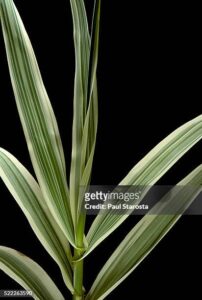
Arundo donax (Giant reed):
Scientific classification
Kingdom: Plantae
Clade: Tracheophytes
Clade: Angiosperms
Clade: Monocots
Clade: Commelinids
Order: Poales
Family: Poaceae
Genus: Arundo
Species: A. donax
Binomial name
Arundo donax
This plant is considered a high-risk species due to its aggressive growth and displacement of native vegetation¹.
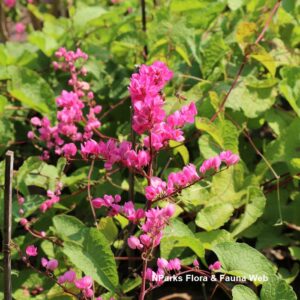
Antigonon leptopus (Mountain rose):
Scientific classification
Kingdom: Plantae
Clade: Tracheophytes
Clade: Angiosperms
Clade: Eudicots
Order: Caryophyllales
Family: Polygonaceae
Genus: Antigonon
Species: A. leptopus
Binomial name
Antigonon leptopus
Another high-risk species, it has the same invasive characteristics as the Black wattle.
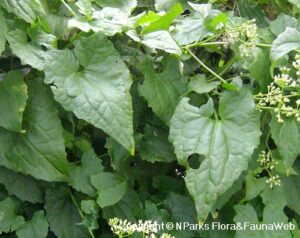
Mikania micrantha (Climbing boneset) (American vally, Kaipu vally, Dhritharashtra pacha):
Scientific classification
Kingdom: Plantae
Clade: Tracheophytes
Clade: Angiosperms
Clade: Eudicots
Clade: Asterids
Order: Asterales
Family: Asteraceae
Genus: Mikania
Species: M. micrantha
Binomial name
Mikania micrantha
An aggressive climber, this plant has swathed the canopy at the Aralam Wildlife Sanctuary in Wayanad, displacing the natural vegetation¹.
Summary: Twining vine that smothers trees and shrubs, reducing light availability and hindering growth, alters forest structure and composition.
Why invasive: Rapidly climbs and smothers other plants, reproduces vegetatively and by seeds, tolerant of diverse soil conditions, fragments easily and re-roots readily.
Description: A fast-growing climbing vine with small, white flowers and heart-shaped leaves with serrated margins. The stems are woody and covered in fine hairs.
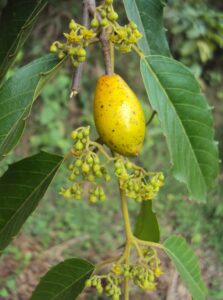
Maesopsis eminii:
Scientific classification
Kingdom: Plantae
Clade: Tracheophytes
Clade: Angiosperms
Clade: Eudicots
Clade: Rosids
Order: Rosales
Family: Rhamnaceae
Tribe: Maesopsideae
Weberb.
Genus: Maesopsis
Engl.
Species: M. eminii
Binomial name
Maesopsis eminii

Hypoestes sanguinolenta:
Scientific classification
Kingdom: Plantae
Clade: Tracheophytes
Clade: Angiosperms
Clade: Eudicots
Clade: Asterids
Order: Lamiales
Family: Acanthaceae
Genus: Hypoestes
Species: H. phyllostachya
Binomial name
Hypoestes phyllostachya
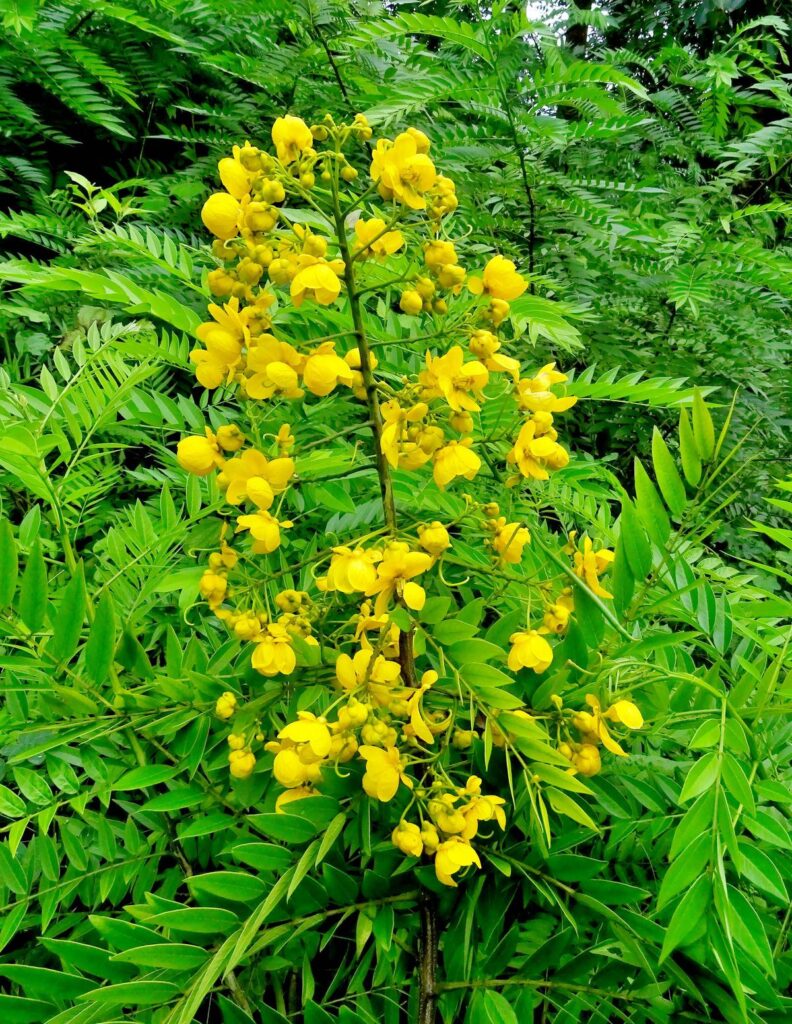
Senna spectabilis (Cassia spectabilis):
Scientific classification
Kingdom: Plantae
Clade: Tracheophytes
Clade: Angiosperms
Clade: Eudicots
Clade: Rosids
Order: Fabales
Family: Fabaceae
Subfamily: Caesalpinioideae
Genus: Senna
Species: S. spectabilis
Binomial name
Senna spectabilis
Senna spectabilis (Cassia spectabilis) (locally known as “Manja Konna”) shows an increase of more than 10 percent from 2015 in the Attapady region. “They were planted as avenue trees along roadsides in the state. But soon spread into wildlife sanctuaries as well as in plantations due to their high invasive nature. Allelochemicals produced by Senna spectabilis prevent germination of many native species,”
സെന്ന സ്പെക്റ്റാബിലിസ് (പ്രാദേശികമായി “മഞ്ഞ കൊന്ന” എന്നറിയപ്പെടുന്നു) അട്ടപ്പാടി മേഖലയിൽ 2015-നെ അപേക്ഷിച്ച് 10 ശതമാനത്തിലധികം വർദ്ധനവ് കാണിക്കുന്നു. “സംസ്ഥാനത്ത് പാതയോരങ്ങളിൽ അവന്യൂ മരങ്ങളായി അവ നട്ടുപിടിപ്പിച്ചു. എന്നാൽ താമസിയാതെ വന്യജീവി സങ്കേതങ്ങളിലേക്കും തോട്ടങ്ങളിലേക്കും അവയുടെ ഉയർന്ന ആക്രമണ സ്വഭാവം കാരണം വ്യാപിച്ചു. സെന്ന സ്പെക്റ്റാബിലിസ് ഉത്പാദിപ്പിക്കുന്ന അലോലോകെമിക്കലുകൾ പല തദ്ദേശീയ ജീവിവർഗങ്ങളുടെയും മുളയ്ക്കുന്നത് തടയുന്നു.
Summary: Grows rapidly, forming dense monocultures that shade out native trees and shrubs, altering forest composition and hindering seed dispersal by frugivorous animals.
Why invasive: Nitrogen-fixing ability enriches soil, promoting its own growth, produces large quantities of wind-dispersed seeds.
Description: A fast-growing tree with showy yellow flowers and large, leathery leaves. The bark is smooth and pale gray, and the branches are brittle.
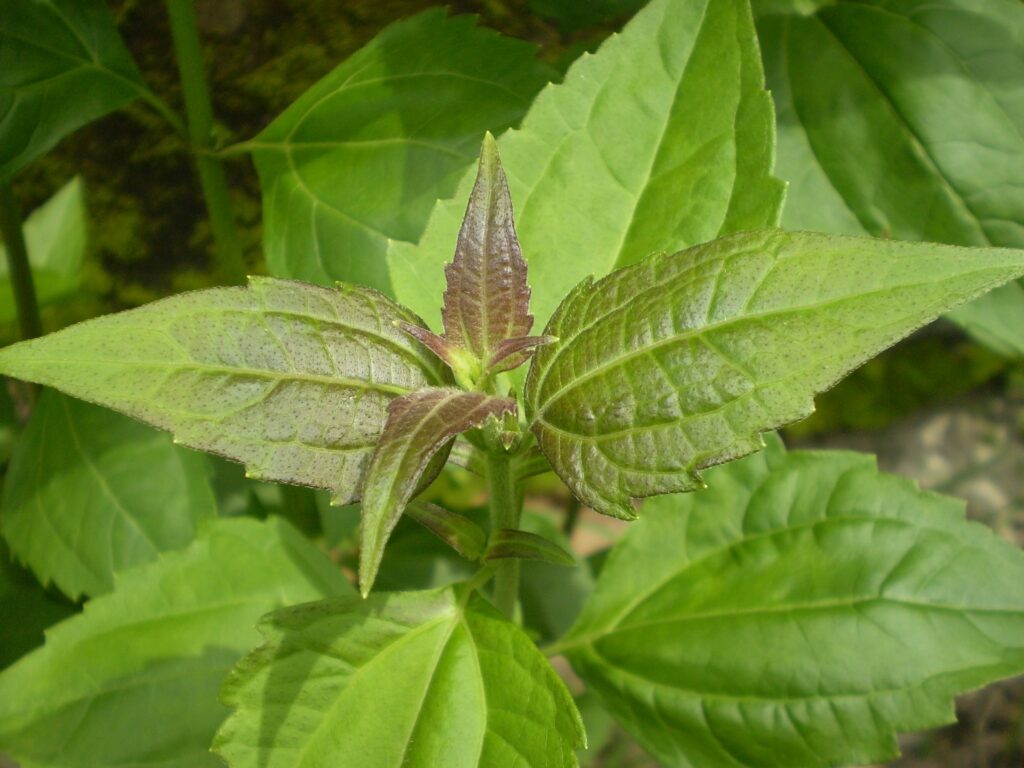
Chromolaena odorata (Siam weed) (Eupatorium odoratum):
Scientific classification
Kingdom: Plantae
Clade: Tracheophytes
Clade: Angiosperms
Clade: Eudicots
Clade: Asterids
Order: Asterales
Family: Asteraceae
Genus: Chromolaena
Species: C. odorata
Binomial name
Chromolaena odorata
Siam weed, a commonly seen plant in Kerala, is locally known as “Communist Pacha (green)”. Native to the Americas, Siam weed was an invasive plant which took over the barren lands of Kerala, after which many native species like the medicinal plant Sida cordifolia started disappearing.
This common species has started naturalisation and is preferred by pollinating insects as it produces more pollen grains and nectar than the native ones, affecting the local biodiversity and its regeneration.
കേരളത്തിൽ സാധാരണയായി കാണപ്പെടുന്ന ഒരു സസ്യമായ സിയാം കള (ക്രോമോലെന ഒഡോറാറ്റ) പ്രാദേശികമായി “കമ്മ്യൂണിസ്റ്റ് പച്ച (പച്ച)” എന്നാണ് അറിയപ്പെടുന്നത്. അമേരിക്കയുടെ ജന്മദേശമായ സിയാം വീഡ്, കേരളത്തിലെ തരിശായി കിടന്ന ഭൂമി കൈയടക്കിയ ഒരു അധിനിവേശ സസ്യമായിരുന്നു, അതിനുശേഷം ഔഷധ സസ്യമായ സിഡാ കോർഡിഫോളിയ പോലുള്ള പല നാടൻ ഇനങ്ങളും അപ്രത്യക്ഷമാകാൻ തുടങ്ങി.
Summary: Forms dense thickets, suppressing regeneration of native species, altering soil nutrient cycling, and allelopathically inhibiting growth of other plants.
Why invasive: Fast-growing, reproduces vegetatively and by seeds, allelopathic chemicals suppress other plants, releases volatile compounds affecting seed germination.
Description: A shrub or small tree with hairy stems, oval leaves with serrated margins, and small white flowers in dense clusters.

Prosopis juliflora (Sali):
Scientific classification
Kingdom: Plantae
Clade: Tracheophytes
Clade: Angiosperms
Clade: Eudicots
Clade: Rosids
Order: Fabales
Family: Fabaceae
Subfamily: Caesalpinioideae
Clade: Mimosoid clade
Genus: Prosopis
Species: P. juliflora
Binomial name
Prosopis juliflora
This high-risk species is invasive because it displaces and destroys a large number of native species, causing environmental and economic loss.
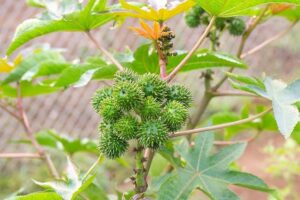
Ricinus communis (Avanakku):
Scientific classification
Kingdom: Plantae
Clade: Tracheophytes
Clade: Angiosperms
Clade: Eudicots
Clade: Rosids
Order: Malpighiales
Family: Euphorbiaceae
Subfamily: Acalyphoideae
Tribe: Acalypheae
Subtribe: Ricininae
Genus: Ricinus L.
Species: R. communis
Binomial name
Ricinus communis
This is one of the 10 widespread alien species around the globe present in the State.
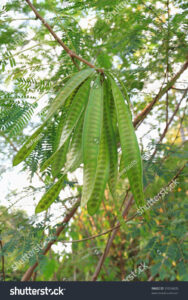
Leucaena leucocephala (Ipil ipil):
Scientific classification
Kingdom: Plantae
Clade: Tracheophytes
Clade: Angiosperms
Clade: Eudicots
Clade: Rosids
Order: Fabales
Family: Fabaceae
Subfamily: Caesalpinioideae
Clade: Mimosoid clade
Genus: Leucaena
Species: L. leucocephala
Binomial name
Leucaena leucocephala
This is one of the 10 widespread alien species around the globe present in the State.
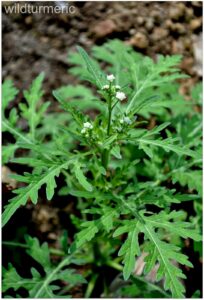
Parthenium hysterophorus
Scientific classification
Kingdom: Plantae
Clade: Tracheophytes
Clade: Angiosperms
Clade: Eudicots
Clade: Asterids
Order: Asterales
Family: Asteraceae
Genus: Parthenium
Species: P. hysterophorus
Binomial name
Parthenium hysterophorus
Please note that the management of each of these plants requires different strategies. These plants are invasive because they have the ability to reproduce both asexually and sexually, grow fast, reproduce rapidly, have high dispersal ability, tolerate a wide range of environmental conditions, and live off of a wide range of food types.
This list is not exhaustive, and new invasive specis are being identified in Kerala regularly. Recognizing these invaders and understanding their impacts is crucial for developing effective management strategies. By controlling the spread of invasive plants, we can protect Kerala’s unique biodiversity and ensure its long-term ecological health.
Remember: Invasive plant removal should be done responsibly and following best practices to avoid unintentionally spreading the plants further. Consult with local experts or authorities for guidance on safe and effective control methods.
What are the impacts of these invasive plants?
Invasive plant species can have significant impacts on the environment, economy, and society. Here are some of the impacts of invasive plants found in Kerala:
- Biodiversity Loss: Invasive plants can displace and destroy a large number of native species, causing a severe threat to Kerala’s plant biodiversity. They can affect the survival of local species and damage the quality of soil.
- Economic Loss: Many of these invasive species cause environmental and economic loss. They can affect agriculture and forestry, leading to economic losses.
- Water Availability: Some invasive plants, like the Water Hyacinth, can affect underground water availability².
- Food Chain Disruption: Invasive plants can indirectly affect animals by intruding the food chain².
- Ecotourism Impact: Invasive plants can affect Kerala’s ecotourism, which is a significant part of the state’s economy³.
- Livelihoods of Indigenous Communities: The livelihoods of indigenous tribal communities can also be impacted by these invasive plants³.
- Impact on Native Animals: Invasive plants can also impact the lives of native wild animals³.
- Post-Disaster Impact: The growth of invasive alien plants has been intensified after events like floods. These plants can take over barren lands and many native species start disappearing².
Proper surveillance and monitoring, treatment of imported materials that could be carrying invasive species, increased research and attention along with reconstruction efforts in state policy is the need of the hour².
Source:
(1) 89 invasive plant species present a threat to Kerala’s biodiversity. https://www.thehindu.com/sci-tech/energy-and-environment/89-invasive-plant-species-present-a-threat-to-keralas-biodiversity/article3470290.ece.
(2) Invasive plant species are creeping into Kerala after the floods. https://india.mongabay.com/2019/01/invasive-plant-species-are-creeping-into-kerala-after-the-floods/.
(3) Invasive Plant Species Are Creeping Into Kerala After the Floods. https://thewire.in/environment/invasive-plant-species-are-creeping-into-kerala-after-the-floods.
How can I identify these species?
Identifying invasive plant species involves observing their unique characteristics. Here are some tips on how to identify the invasive plants found in Kerala:
- Acacia mearnsii (Black wattle): Look for a fast-growing, evergreen tree that can reach up to 10-20 meters in height¹.
- Antigonon leptopus (Mountain rose): This plant is a fast-growing vine with pink or white flowers¹.
- Arundo donax (Giant reed): This plant is a tall, perennial cane. It is one of the several so-called reed species¹.
- Chromolaena odorata (Siam weed): This is a perennial shrub that can grow up to 2.5 meters tall. It has soft stems but the base of the shrub is woody¹.
- Ipomoea cairica (Kolambipoo): This is a vining, herbaceous, perennial plant with palmate leaves and large, showy white to lavender flowers¹.
- Mikania micrantha (American vally, Kaipu vally, Dhritharashtra pacha): This is a fast-growing, perennial, herbaceous vine that can grow up to 6 meters long¹.
- Mimosa diplotricha var. diplotricha (Anathottavadi): This plant is a creeping herb with thorny stems¹.
- Prosopis juliflora (Sali): This is a shrub or small tree that can grow up to 10 meters tall¹.
- Sphagneticola trilobata (Singapore daisy): This is a creeping herb with yellow, daisy-like flowers¹.
- Eichhornia crassipes (Water hyacinth): This is a free-floating perennial aquatic plant. It has broad, thick, glossy, ovate leaves².
- Salvinia molesta (African Payal): This is a free-floating fern that floats on the surface of the water².
- Lantana camara (Konkini or Arippoo): This is a small perennial shrub with small, tubular shaped flowers that are pink, orange, yellow, or blue and white³.
- Ricinus communis (Avanakku): This is a fast-growing, small to medium size tree with glossy foliage⁴.
- Leucaena leucocephala (Ipil ipil): This is a small, fast-growing mimosoid tree native to southern Mexico and northern Central America⁴.
Please note that these descriptions are general and these plants may vary in appearance depending on their growing conditions¹. For accurate identification, you may want to refer to a field guide or consult with a local botanist or biologist¹.
Source:
(1) 89 invasive plant species present a threat to Kerala’s biodiversity. https://www.thehindu.com/sci-tech/energy-and-environment/89-invasive-plant-species-present-a-threat-to-keralas-biodiversity/article3470290.ece.
(2) Invasive plant species are creeping into Kerala after the floods. https://india.mongabay.com/2019/01/invasive-plant-species-are-creeping-into-kerala-after-the-floods/.
(3) Invasive Plant Species Introduced by Kerala Floods. https://www.drishtiias.com/daily-news-analysis/invasive-plant-species-introduced-by-kerala-floods.
(4) Are Alien Invasive Plants a Threat to Forests of Kerala?. https://docs.kfri.res.in/KFRI-OP/KFRI-OP-2012-001.pdf.
What are some ways to control invasive plants?
There are several ways to control invasive plants. Here are some methods that can be applied in Kerala:
- Herbicides: Chemicals can be used to control invasive plants⁴.
- Mowing, Burning, Slashing or Hand-Felling: These labour-intensive practices can help control the growth of invasive plants⁴.
- Cultural Practices: This includes mulching, soil solarization with plastic film, thermal weed control (e.g., flaming, hot water, and steam), prescribed burning, water manipulation, and prescribed grazing with domesticated herbivores (e.g., cattle, sheep, goats, and horses)³.
- Quarantine Measures: Quarantine measures at sea and airports should be made stringent to control the arrival of invasive varieties. Imported timber should be treated with pesticides as the wood would carry seeds and eggs of plants and insects⁵.
- Landscape Restoration: Once the resources and material for landscape restoration are ready, the invasive species has to be removed using a threefold approach for large trees, large saplings, and small saplings¹.
- Debarking Large Trees: The large trees need to be debarked from breast height downwards (1.3 m above ground level), including the collar part of the tree¹.
- Removal of Saplings and Plantlets: Larger saplings can be uprooted using specially designed weed pullers. Small plantlets need to be removed mechanically¹.
- Planting of Native Tree Species: Planting of large saplings of native tree species should start along with or before the start of invasive species removal¹.
Please note that these methods require careful planning and execution, and the specific method used can depend on the type of invasive plant and the local conditions¹. It’s also important to monitor the area after the removal of invasive plants to prevent re-infestation⁴.
Source:
(1) Management of invasive plants through ecological resistance – Springer. https://link.springer.com/article/10.1007/s10530-017-1529-7.
(2) Control Mechanisms | National Invasive Species Information Center. https://www.invasivespeciesinfo.gov/subject/control-mechanisms.
(3) 89 invasive plant species present a threat to Kerala’s biodiversity. https://www.thehindu.com/sci-tech/energy-and-environment/89-invasive-plant-species-present-a-threat-to-keralas-biodiversity/article3470290.ece.
(4) Plan in place to eradicate invasive plant species from Kerala’s …. https://www.thehindu.com/news/national/kerala/plan-in-place-to-eradicate-invasive-plant-species-from-keralas-wildlife-habitat/article66450185.ece.
(5) Invasive plant species are creeping into Kerala after the floods. https://india.mongabay.com/2019/01/invasive-plant-species-are-creeping-into-kerala-after-the-floods/.
Are there any native plant species in Kerala?
Yes, Kerala is home to a rich variety of native plant species due to its diverse ecosystems, which include tropical rainforests, montane forests, and coastal mangroves¹. Here are some examples:
- Bamboo: A versatile plant used for construction, furniture and culinary purposes³.
- Wild Black Pepper (Piper nigrum): Kerala is famous for its pepper. It is a flowering vine cultivated for its fruit, known as a peppercorn³.
- Wild Cardamom: A spice native to the Western Ghats in Kerala³.
- Calamus rotang: A type of giant grass³.
- Vetiveria zizanioides (Vetiver grass): An aromatic grass³.
- Cotoneaster buxifolia: A species of Cotoneaster native to Kerala¹.
There are also many endemic species in Kerala. A total of 1709 taxa that are endemic to Peninsular India are found in Kerala; of which 237 species distributed in 47 families are exclusively endemic to the present political boundary of the state⁴. There are about 1170 species with established medicinal properties⁴.
For a more comprehensive list and detailed information, you might want to refer to a field guide or consult with a local botanist or biologist¹.
Source:
(1) E-Flora Kerala | Flowering plants of Kerala. https://www.eflorakerala.com/.
(2) Wildlife of Kerala – Wikipedia. https://en.wikipedia.org/wiki/Wildlife_of_Kerala.
(3) Plant Diversity of Kerala State – An overview – 19.9. https://bsienvis.nic.in/files/Kerala_1.1.15.pdf.
(4) Category:Flora of Kerala – Wikipedia. https://en.wikipedia.org/wiki/Category:Flora_of_Kerala.
